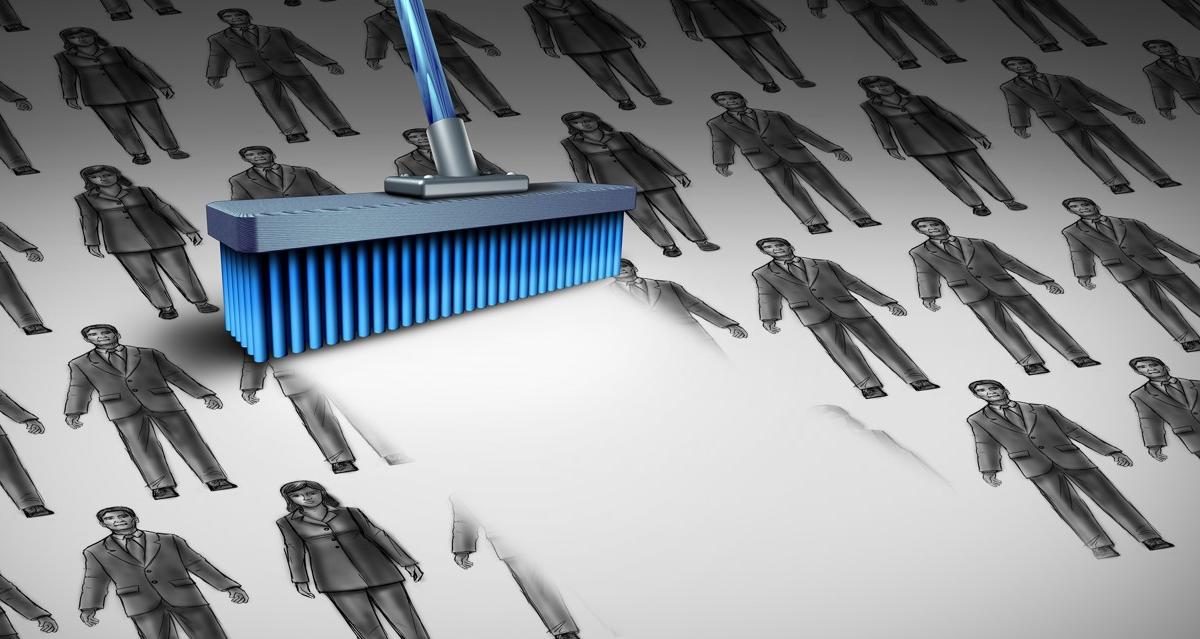
Total employed workers fell for the second month in a row in November, dropping nearly 400,000 workers below the pre-pandemic peak in February 2020. According to new employment data released by the Bureau of Labor Statistics on Friday, the current population survey shows employed workers fell to 158,470,000 in November, down 138,000 from October’s total of 158,608,000. This continues a nine-month trend in which the total number of employed persons has moved sideways.
From March 2022 to November, the number of total employed persons has only increased by 12,000 people, rising from about 158.45 million to 158.47 million. With November’s drop, this also puts total employment in November below the peak of 158.8 million in February 2020. In other words, the household survey shows there are fewer employed people now than before the covid panic.
Yet, the headlines in the business press today told us that the “U.S. gained 263,000 jobs” in November and that “total employment” is now a million jobs above the February 2020 peak.
Those “total jobs” numbers come from the “establishment survey” which differs from the household survey in that the establishment survey measures jobs instead of workers. The household survey measures workers. Historically, the two numbers often track together, but there is a sizable gap between the two numbers in recent months. That is, since January, total jobs have grown considerably—showing an increase of 3.8 million jobs. Yet over that same time, the household survey has shown an increase of only 1.3 million employed persons. In other words, the two surveys together suggest much more growth in jobs than actual workers with jobs. Total jobs in the establishment survey has grown month-to-month in every month since late 2020. Yet, total employed workers has fallen (month over month) for four of the last eight months.
One conclusion we can draw here is that fewer people are working more jobs to cover costs, and this would make sense given that disposable income, saving rates, and real wages are all falling.
For example, according to the Bureau of Economic Analysis, disposable income is lower now than it was before the covid panic, coming in at $15.1 trillion. That sum was $15.2 trillion during February of 2020. This is a sizable departure from the trend in disposable income since 2014, and November’s disposable income level is now $1 trillion below the trend line.
Meanwhile, the personal savings rate in October fell to 2.3 percent. That’s the second-lowest level recorded going back to 1959. The only month with a lower saving rate was July 2005. Credit card debt, in contrast, reached new highs in November and is now well above its previous 2020 peak.
Workers and consumers are likely spending down whatever savings they have because wages, in spite of what the allegedly “hot” establishment-survey jobs numbers say, are not keeping up with price inflation. Since April 2021, Consumer Price Index (CPI) inflation has repeatedly outpaced year-over-year growth in average hourly earnings. In November, wages grew by 5.09 percent, but the CPI grew by 7.7 percent (year over year) in October. Price inflation will have to be considerably lower in November than it was in October if there is going to be real wage growth for the month. If there does prove to be real wage growth in November—which is unlikely—it will be the first time in 20 months.
With fewer employed workers, though, why aren’t we seeing the unemployment rate rise? After all, the unemployment rate in November remained at 3.7 percent, unchanged from October.
This can be partly explained by the fact that the workforce is shrinking. It is well known by now, for example, that Baby Boomers are ageing and many are retiring and leaving the workforce. Overall labor force participation is well down from its peak in the late 1990s. Yet retirement doesn’t explain all of it. Even among workers age 25-54, labor force participation is down from the late 1990s, and is also down from late 2020 when prime-age participation peaked during the last boom in worker demand. At the same time, the total number of workers “not in the labor force” reached a 13-month high in November. This includes retirees, but also includes discouraged workers. In fact, the number of workers who report having left the work force but also “want a job now” totals more than 5.5 million. Altogether, it appears that declining workforce participation is indeed keeping the unemployment rate from rising, even as the total number of employed workers is falling.
Nor does other economic data point to enough strength in the economy to keep job demand going. With home sales plummeting, savings falling, income dropping, and gross fixed capital turning negative, most signs point to an economic slowdown.
The other big factor pointing toward recession is the yield curve, which has now inverted, pointing to a coming recession. In fact, inversions in the yield curve have a perfect record of predicting recessions in recent decades. As of late October, the spread between the ten-year and the three-month Treasurys is now negative, and it is now in deeper negative territory than at any other time since 2001, just prior to the start of the 2001 recession.
In spite of these indicators pointing toward recession, the Biden administration and the leadership at the Federal Reserve continue to point toward the job growth data as evidence of a strong economy. The good news here is that this could provide sufficient justification for the Federal Reserve to keep allowing interest rates to rise while allowing more assets to roll off the balance sheet. The Fed should be selling off far more than it is from its balance sheet, of course, but even the small reduction in Fed assets at least allows for some slight normalization in markets. That’s all to the good.
After all, once the jobs data does start to look undeniably bad, we can expect the Fed to immediately start looking for ways to once again return to quantitative easing and more easy money overall. More easy money is what Wall Street is praying for, but that would only bring a new wave of price inflation—whether in assets or consumer goods—in the manner of Arthur Burns’s failed fight against inflation in the 1970s. What really needs to happen is for the Fed to lay off the easy money long enough for countless bubbles in stocks, real estate, tech, and countless so-far-unknown other sectors to deflate. We’re not even close to that point in the current boom-bust cycle.







